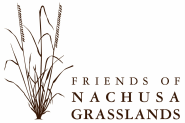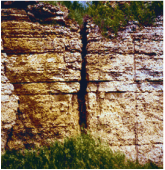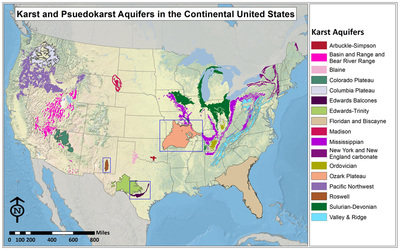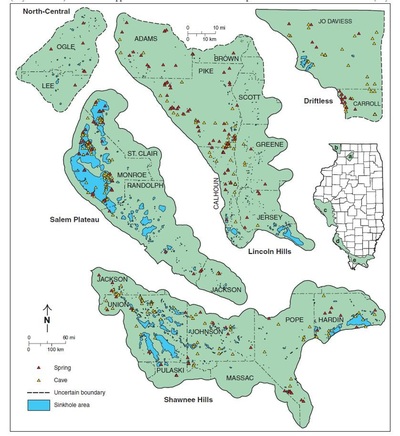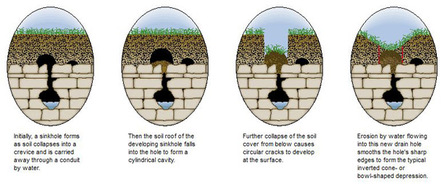Karst Terrane: What It Is, Why It Is Here, and Why It Is Important to Nachusa Grasslands
Part 1: What It Is
|
Karst is a German word that was derived from their name for a limestone plateau around the Adriatic city of Trieste.
Terrane is defined as a series of rock formations with a prevalent type of rock, Today, karst terrane refers to land forms where porous carbonate rock formations, at or near the surface, are characterized by sinkholes, seeps, natural springs, or artesian wells. |
Approximately 18% of the contiguous United States and only 10% of Illinois is defined as having karst or pseudokarst terrane. There are five regions in the state that are defined as karst, and all but the North-Central region are areas that were not covered by ancient glaciers. Nachusa Grasslands is located on the southeast edge of the North-Central karst region.
|
Karst is formed when layers of soluble carbonate bedrock, such as limestone or dolomite, are intermixed with layers of insoluble bedrock, such as sandstone or shale, which are then exposed to water.
As the water dissolves the carbonate rock, it forms vertical crevices and horizontal fractures. When these cracks become interconnected, the flow of the water forms the karst features. |
Underground streams will form if the flow is relatively unimpeded by insoluble rock. And, if the soluble rock layer is thick enough, large cavities can be carved out which form caves when they are open at the surface. When a thinner karst feature is exposed, as in a road cut or bluff, seeps can form. Or, the water may exit as a spring or artesian well if the rock formations are underground and the water flow is impeded by insoluble rock, such as along a fault line.
|
|
Sinkholes occur when bedrock becomes so eroded it can no longer support the unconsolidated overburden (ground) above it, or the water level in a large cavity is lowered, leaving the ground above unsupported. Although sinkholes are usually formed by a sudden collapse of the ground surface, they are generally the end result of a long slow process.
|
Often precipitated by heavy rains saturating and softening the ground, sinkholes can also be caused by earthquakes and the sudden lowering of the water table. These karst features also form large aquifers, which can be easily tapped for human use, and just as easily polluted.
|
All images from the University of Illinois IDEALS Repository
CONNECT WITH US |
|
